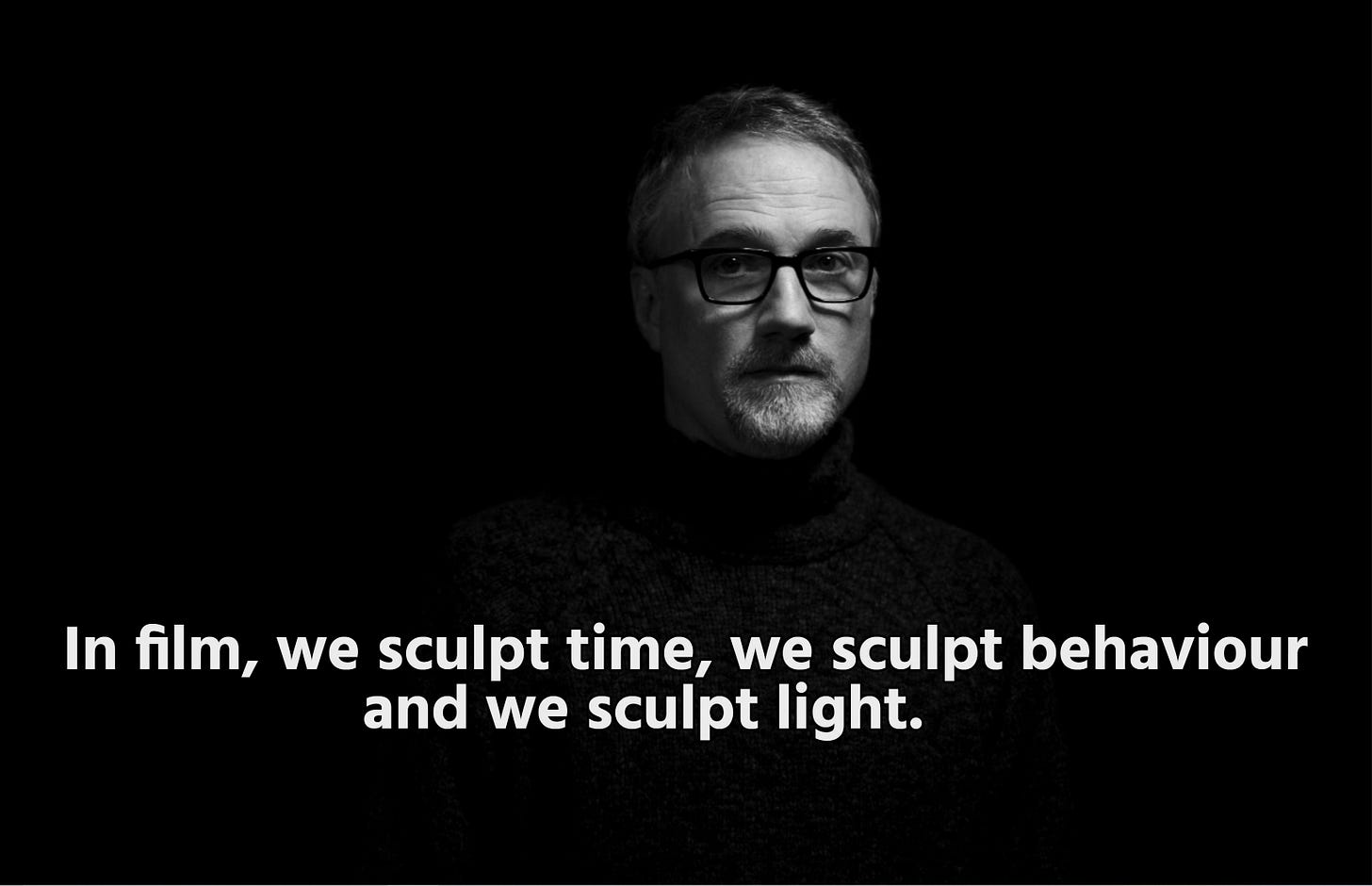Sculpting Time, Behavior, and Light...
How David Fincher and Andrei Tarkvosky deal with time, behavior, and light...
In film, we sculpt time as well as behavior and light, as David Fincher suggests. Let's concentrate on behavior and time first. Time is linked to consciousness and memory, according to the renowned Andrei Tarkovsky. Film, as Erwin Panofksy famously observed, is the ultimate time-space art form. In order to emphasize the rhythm of his shots, Tarkovsky turned to nature. He demonstrated to us how time flows and changes depending on the stage of life that is depicted in each shot.
Fincher and Tarkovsky are identical, as they both describe cinema as a living thing. Both filmmakers use different techniques, but they both portray time in a similar way. While Tarksovky mostly concentrated on catching pictures of the natural world, such as skies, rivers, water, and occasionally hallways and rooms, Fincher shows the passage of time in confined settings, frequently with the camera filming two or more people at once.
Being David Fincher's most structurally intricate film, The Curious Case of Benjamin Button (2008) is the ideal example. As we watch the main character age, Fincher shows us how time passes. Things get even more complex when we see memories of other important characters and even their deaths. The same elements ran throughout Tarkovsky's body of work, but they were particularly evident in The Mirror (1975), when he gave us a glimpse into both personal and historical events.
The two directors don't lag behind one another in terms of behavior, either. Both employ tracking shots, albeit evidently from different angles, in their respective films. When it comes to camera movement, Tarvosky might occasionally leave the camera in place and allow the subject to roam freely, but Fincher follows the character's every step. While Tarkovsky prioritized time even though he was deeply concerned with behavior, Fincher always prioritizes behavior before time.
Moreover, editing, by linking and severing different rhythms, breaks the passage of time as we know it. As for light, one can choose between soft and hard light, and it will always be important in the same manner as music. That's only another way of narrating the story or analyzing actions. Or we sculpt even the light, as Fincher proposes. Being directional and logical at all times is the key.




